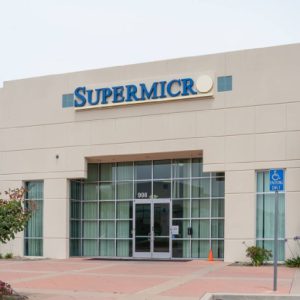The first is the ability to mix inside a single Superdome the PA-RISC processor, whose final iteration, the PA 8900, was unveiled yesterday, with the Itanium 2 processors shipping at the end of this year.
You can now mix the two inside the same Superdome, running them in different partitions, said Chris Rooke, VP of marketing and solutions for the Palo Alto, California-based company’s NonStop Enterprise Systems division. This is a powerful enabler of ease of migration.
Effectively what HP is doing here is to inject gradualism into the process whereby Superdome users move from one processor architecture to the other, so clearly its first concern is with the existing customer base.
The same can be said of the new Integrity NonStop, where it inherited an entire user base with the Compaq acquisition and must now hold their hand through a migration to NonStop on Itanium, reassuring them that they will lose none of the functionality they have enjoyed until now.
The main feature HP has had to deliver here is, as the operating system’s name suggests, the reliability of the boxes, which is what has won them significant market share in financial services and telecoms operators, neither of which can afford to have business-critical servers go down ever.
To achieve this, explained Rooke, we’ve taken some of the modules from Itanium and surrounded them with value-added hardware so that we can take them offline and the system rides right through the change.
To this end, the Itanium-based NonStop box, called the Integrity NonStop, is available in two configurations: Duplex, in which there are two modules running, on of which for failover, and Triplex, where there are three modules, such that one can fail and the box is still running in fault-tolerant mode, Rooke went on. The second configuration is what enables HP to tout not five, but seven-9s availability.
This is a rejuvenation of the product line with improved price performance, which should attract more customers and solutions providers, commented Richard Buckle, chairman of the NonStop user group ITUG.
In addition to wooing existing NonStop users, in fact, HP was at pains, in announcing the new offering at its ENSA event in Copenhagen, Denmark, to stress that it is also targeting users of competing technologies.
That basically means IBM mainframe users, which is one of the reasons the seven-9s availability claim is an integral part of the marketing. The Triplex version of the box delivers that level of resiliency, while the Duplex is down at five-9s on a par with IBM mainframes.
However, Rooke added that we configured an IBM box to achieve five-9s and handle a certain throughput and compared it with one of our Integrity NonStop boxes in Duplex mode and found that we could deliver equivalent functionality for less than half the cost.
Of course, an important element in bringing new customers on board beyond NonStop’s traditionally strong areas will be application compatibility, and this context, Rooke claimed that any software running on NonStop will move across either with binary compatibility or, at most the need to recompile, after which the customer will have an object that will run on both [processor] platforms, representing a huge saving in transitioning. Buckle concurred. They’ve done a good job in hiding the complexity of the transition.
HP is also showcasing one or two new applications to which NonStop technology is now being put at ENSA. At the show is SimDesk Technologies Inc, a company that provides remote and even mobile access to an individual’s data files, supporting devices that include not only laptops but also PDAs and smart phones.
We embed drivers on your desktop that enable you to deliver files in encrypted and compressed format to us, then you access then from our storage wherever you are, from whatever kind of device, said Louis Waters, CEO of the Houston, Texas-based company. SimDesk offers file and print services, as well as messaging and groupware.
Founded in 1999 with its first product launch in 2002, the company has moved from an entirely commodity hardware infrastructure (i.e. Linux servers) to NonStop servers at the core for high availability, while its app and Web servers are still on Linux.
Without the NonStop high availability platform we’d be doing massive load balancing, because we provide services to enterprises and even entire populations of cities, such as Houston and Chicago, Waters said.






